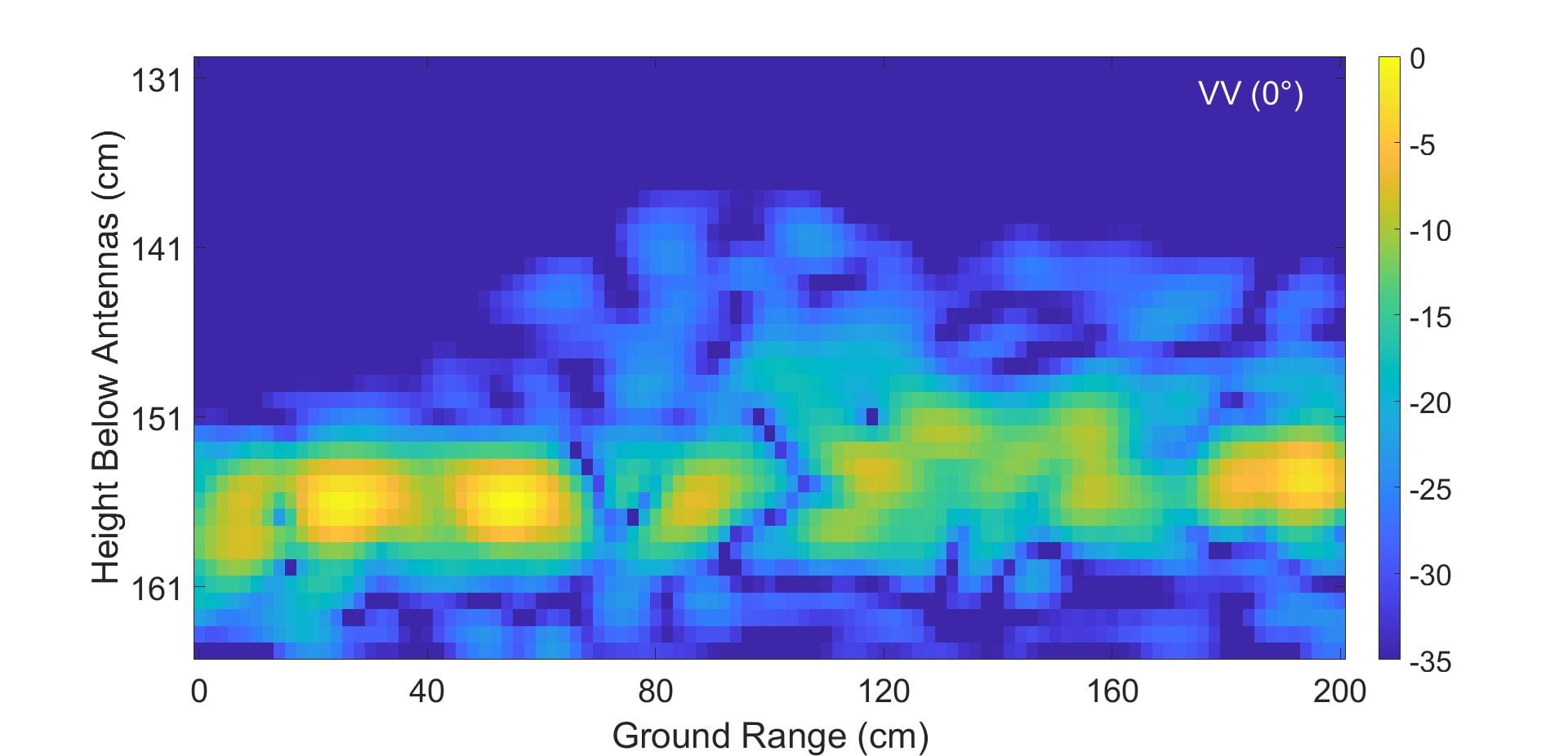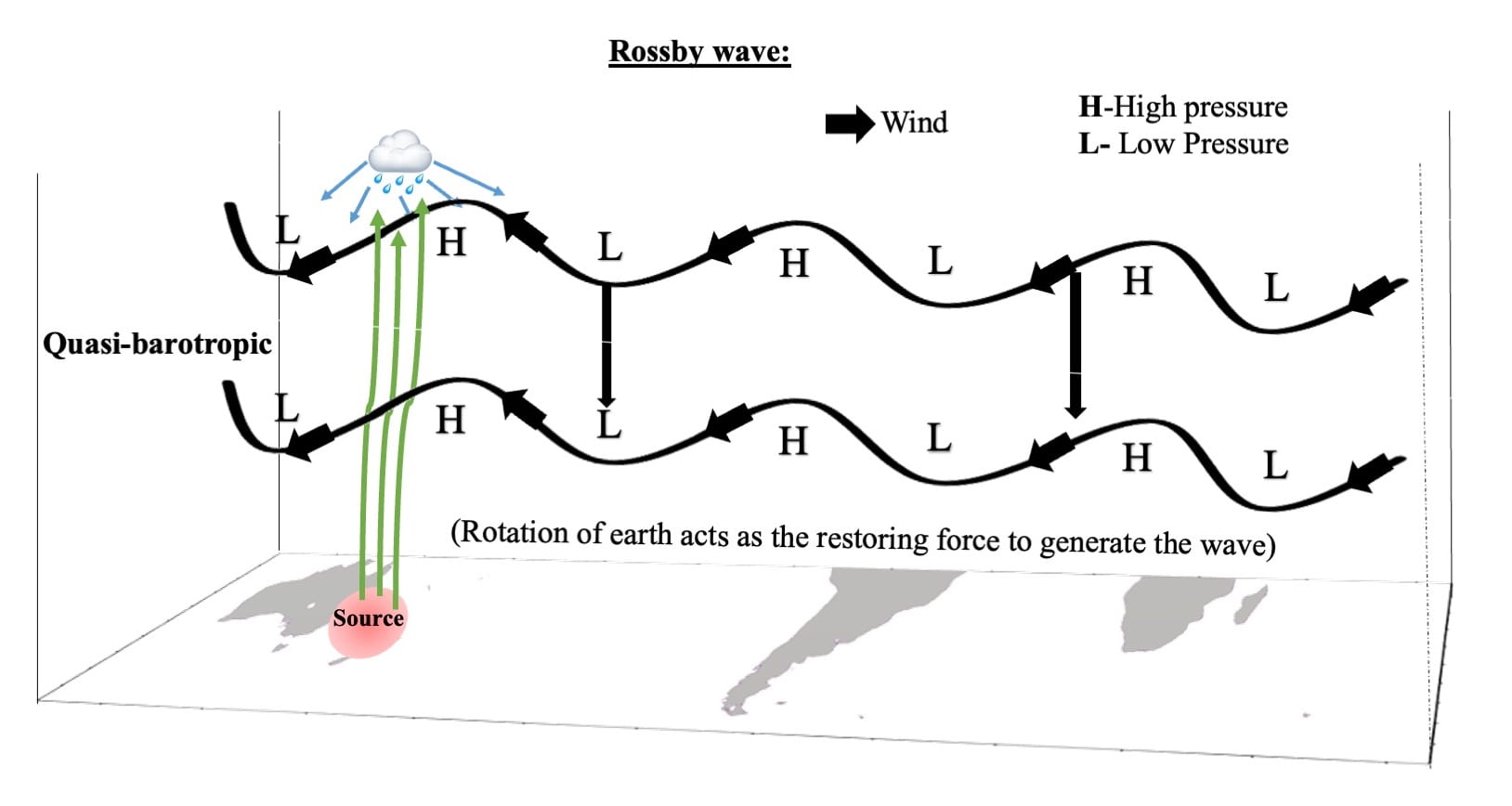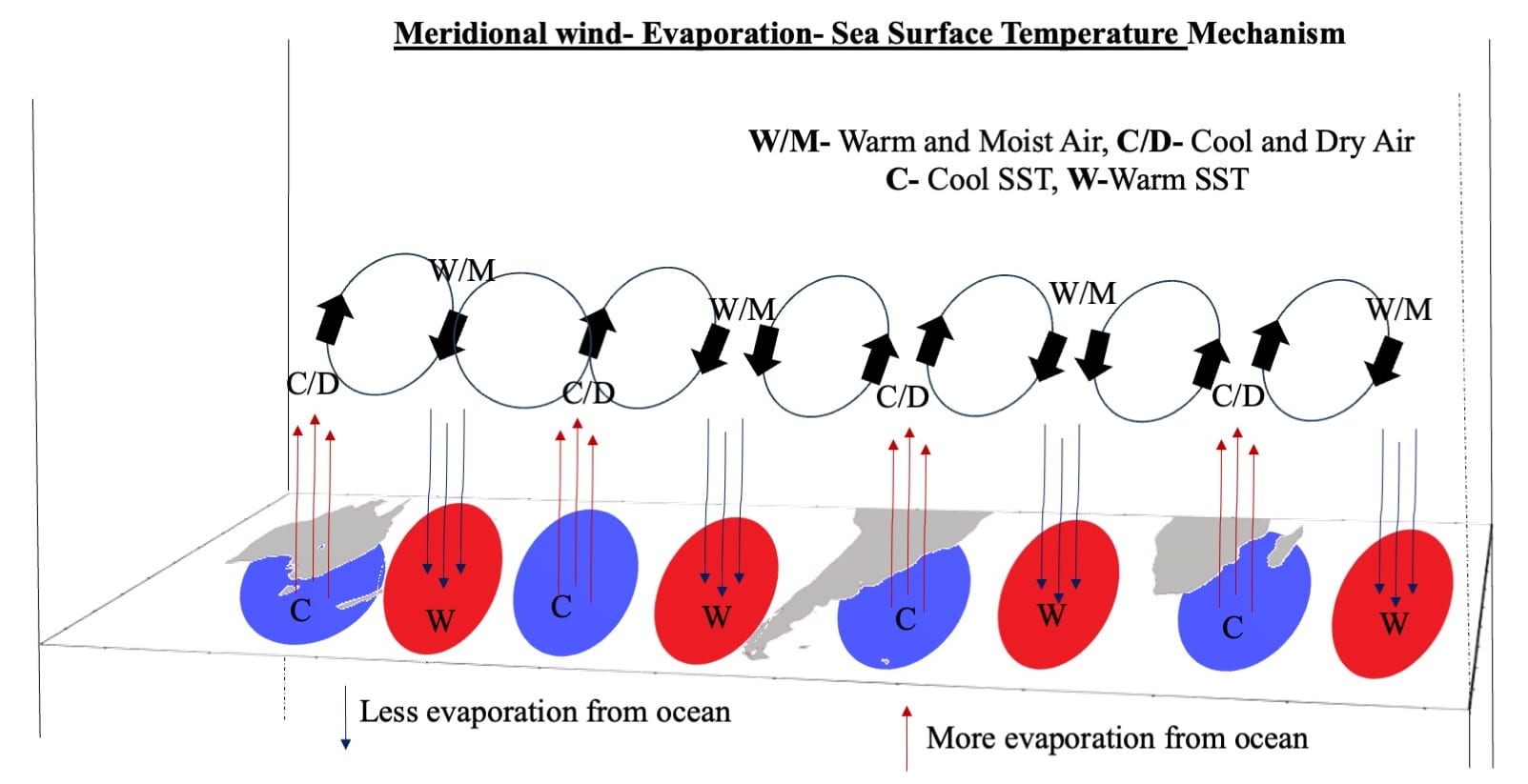By: Dr. Xiaocen Shen
Teleconnections are usually manifested as recurring patterns which link weather and climate anomalies (departures from long-term average) over large distances across the globe (e.g., Wallace and Gutzler 1981). Therefore, they play an important role in shaping climate variability and regional climate change. One striking example is El Niño-Southern Oscillation (ENSO) teleconnection (Figure 1). ENSO is the most prominent year-to-year internal variability in the climate system, although ENSO itself occurs in the tropical Pacific and is reflected as a fluctuation between unusually warm and cold conditions, it excites wave-trains propagating into the extratropics which then strongly affect the precipitation and temperature over mid-high latitudes (e.g., Trenberth et al. 1998). Moreover, the extratropical circulation response to ENSO can further influence the upward propagation of planetary waves in the midlatitudes, thereby leading to significant changes of the stratospheric polar vortex (SPV) via the wave-mean flow interaction (e.g. Domeisen et al., 2019). The induced SPV anomaly, in return, can further descend into the troposphere, modulating the weather condition in the midlatitudes. For instance, this ENSO-SPV linkage is shown to strongly contribute to the cooling over northern Europe in late winter following El Niño (e.g., Ineson and Scaife 2009). Hence, studying teleconnections is not only helpful to better understand the atmospheric circulation variability, but is also key to improving the prediction skill.

Figure 1. Schematic of ENSO teleconnections (from Domeisen et al. 2019)
While the observations are the starting point for studying teleconnections, the limited records make it difficult to draw robust conclusions based on observations alone. On the one hand, the climate system is complex, and the relationships sometimes vary in different time periods (e.g., Dong and McPhaden 2017). On the other hand, the simple correlation between two circulations does not always indicate a physical teleconnection, it can sometimes instead reflect co-varying changes in response to other factors (Kretschmer et al. 2021).
To address this problem, climate model simulations are widely used as they can provide more samples. However, climate models do not always agree with the observed teleconnections, in which case the discrepancy is known as model bias.. There are two main potential reasons for the discrepancy. First, the climate models may fail to capture the key physical processes and therefore cannot reproduce the teleconnections. Second, due to the limited sample size in the observations, the discrepancy may reflect the internal variability of the climate system. Therefore, to confidently use models to study teleconnections and the related aspects, scientific judgement is needed to justify the suitability of models when there are apparent discrepancies (e.g. Jain et al. 2023). In our recent research, we have advocated the use of a forensic investigation approach to understand the discrepancies between climate models and observations, which then helps to make the decision on whether the model outputs can be trusted.
The literal definition of a forensic investigation is the scientific analysis of physical evidence from a crime scene. The logic behind it is to conduct a thorough examination of the evidence to establish the facts and uncover the truth. In the context of assessing model discrepancies in teleconnections, a physically-based analysis is required to understand their origin, which can then provide an evidential basis for deciding whether a model is appropriate for a given scientific purpose. Since the logic is similar with that of solving crime puzzles, the term forensic is used here to characterize our approach (Figure 12). In the following, the case of ENSO-SPV relationship will be shown as an example of how to extract reliable information from the model output using the forensic investigation approach.

Figure 2. The logic of forensic investigation to unravel the climate model biases (adapted from images by Freepik)
In a climate model called the MIROC6, the ENSO-SPV relationship is opposite to observations. At the first glance, it seems that this model is not suitable for studying the ENSO-SPV relationship and related scientific questions. However, according to the physically-based analysis, we found that MIROC6 model actually well captures the relevant dynamical processes, including the extratropical response to ENSO, the anomalous upward propagation of planetary waves, and the wave-mean flow interaction in the stratosphere. The discrepancy is further shown to be mainly related to the wave propagation within the stratosphere, which eventually lead to the different SPV response. This reflects that the causal linkage between ENSO and SPV is shaped by other factors and/or background states, known as the state dependence. Therefore, although the model shows an opposite ENSO-SPV relationship to the observation, it is physically reasonable.
Furthermore, the observations show a state dependence similar to that of the model results, in that the observed ENSO-SPV relationship is not stable and is shaped by other factors, such as the ocean background condition (e.g. Rao et al. 2019). The observational evidence neither supports nor contradicts this state dependence found in the model due to the limited sample size. Thus, depending on the specific purpose of the research, different choices can be made in how to use the model simulations.
If the study does not require a stable teleconnection, for example, if it is used to study non-stationarity and state dependence, then the model can be used directly to provide conditional information. On the other hand, if the study requires a stable teleconnection consistent with observations, then the model should be used only after the application of a physically-based bias adjustment. In the ENSO-SPV relationship case, under the assumption that the state-dependance is spurious, a physically-based bias adjustment is applied to SPV, which effectively aligns the modelled ENSO-SPV relationship with the observations, thereby removes the model-observations discrepancy in the surface air temperature response.
This case gives an example of how the forensic approach could help us to better understand the difference between models and observations, allowing us to make full use of climate model outputs (Figure 3). Similar physically-based approaches have been widely used in the climate research in recent decades (e.g., Kretschmer et al. 2020; Shepherd 2021), providing us with more opportunities to gain a more holistic view of model performance and to extract more information from models.

Figure 3. The forensic investigation processes. The direction of the arrows indicates the order in which actions are taken. The bubbles enclosed by the black contours indicate the conclusions about whether we can trust the model and how to use the model outputs.
Further Reading/References:
Domeisen, D. I. V., Garfinkel, C. I., & Butler, A. H. (2019). The teleconnection of El Nino South-ern Oscillation to the stratosphere. Reviews of Geophysics, 57(1), 5-47. https://doi.org/10.1029/2018rg000596
Dong, L., & McPhaden, M. J. (2017). Why has the relationship between Indian and Pacific ocean decadal variability changed in recent decades? Journal of Climate, 30(6), 1971-1983. https://doi.org/10.1175/jcli-d-16-0313.1
Ineson, S., & Scaife, A. A. (2009). The role of the stratosphere in the European climate response to El Nino. Nature Geoscience, 2(1), 32-36. https://doi.org/10.1038/ngeo381
Jain, S., Scaife, A. A., Shepherd, T. G., Deser, C., Dunstone, N., Schmidt, G. A., Trenberth, K. E., & Turkington, T. (2023). Importance of internal variability for climate model assessment. npj Cli-mate and Atmospheric Science, 6(1), 68. https://doi.org/10.1038/s41612-023-00389-0
Kretschmer, M., Adams, S. V., Arribas, A., Prudden, R., Robinson, N., Saggioro, E., & Shepherd, T. G. (2021). Quantifying causal pathways of teleconnections. Bulletin of the American Meteorological Society, 102(12), E2247-E2263. https://doi.org/10.1175/bams-d-20-0117.1
Kretschmer, M., Zappa, G., & Shepherd, T. G. (2020). The role of Barents–Kara sea ice loss in projected polar vortex changes. Weather Climate Dynamics, 1(2), 715-730. https://doi.org/10.5194/wcd-1-715-2020
Rao, J., Garfinkel, C. I., & Ren, R. C. (2019). Modulation of the Northern winter stratospheric El Nino-Southern Oscillation teleconnection by the PDO. Journal of Climate, 32(18), 5761-5783. https://doi.org/10.1175/jcli-d-19-0087.1
Shepherd, T. G. (2021). Bringing physical reasoning into statistical practice in climate-change sci-ence. Climatic Change, 169(1-2), 2. https://doi.org/10.1007/s10584-021-03226-6
Trenberth, K. E., Branstator, G. W., Karoly, D., Kumar, A., Lau, N. C., & Ropelewski, C. (1998). Progress during TOGA in understanding and modeling global teleconnections associated with tropical sea surface temperatures. Journal of Geophysical Research-Oceans, 103(C7), 14291-14324. https://doi.org/10.1029/97jc01444
Wallace, J. M., & Gutzler, D. S. (1981). Teleconections in the geopotential height field during the Northern Hemisphere winter. Monthly Weather Review, 109(4), 784-812. https://doi.org/10.1175/1520-0493(1981)109<0784:Titghf>2.0.Co;2































